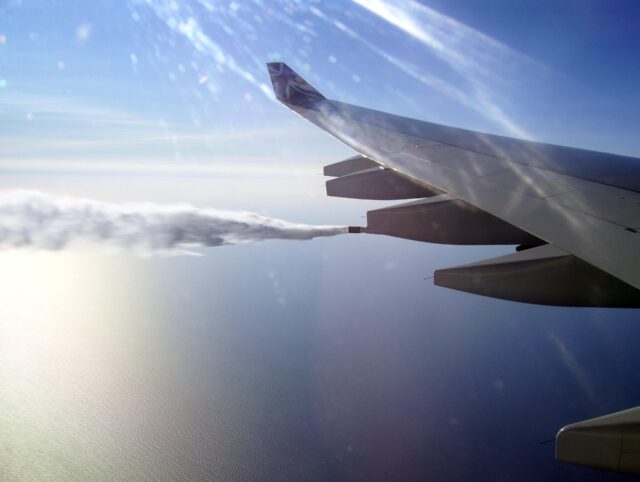NASA tests new material to enable folding wings
NASA says it has successfully applied a new technology in flight that allows aircraft to fold their wings to different angles while in the air.
The recent flight series, which…

NASA says it has successfully applied a new technology in flight that allows aircraft to fold their wings to different angles while in the air.
The recent flight series, which took place at NASA’s Armstrong Flight Research Center in California, was part of the Spanwise Adaptive Wing project (SAW). This project aims to validate the use of a cutting-edge, lightweight material to be able to fold the outer portions of aircraft wings and their control surfaces to optimal angles in flight.
NASA says that SAW, which is a joint effort between Armstrong, NASA’s Glenn Research Center, Langley Research Center, Boeing Research & Technology, and Area-I Inc., has the potential to produce multiple in-flight benefits to both subsonic and supersonic aircraft in the future.
Folding wings
Folding wings in flight has been studied using aircraft in the past, including the North American XB-70 Valkyrie in the 1960s. However, the ability to fold wings in flight has always been dependent on heavy and bulky conventional motors and hydraulic systems.
The SAW project looks to fold wings through the use of an innovative, lightweight material called shape memory alloy. This material is built into an actuator on the aircraft, where it has the ability to fold the outer portion of an aircraft’s wings in flight without the strain of a heavy hydraulic system. Systems with this new technology may weigh up to 80% less than traditional systems.
The recent series of flight tests at Armstrong successfully demonstrated the material’s application and use, by folding the wings between zero and 70 degrees up and down in flight.
“We wanted to see: can we move wings in flight, can we control them to any position we want to get aerodynamic benefits out of them, and could we do it with this new technology,” said SAW Co-Principal Investigator Othmane Benafan.
“Folding wings has been done in the past, but we wanted to prove the feasibility of doing this using shape memory alloy technology, which is compact, lightweight, and can be positioned in convenient places on the aircraft.”
Benefits
On subsonic aircraft, such as commercial airliners, the potential aerodynamic benefit of folding the wings includes increased controllability, which may result in a reduced dependency on heavier parts of the aircraft, including the tail rudder. This may result in a more fuel-efficient aircraft, as well as the ability for future long-winged aircraft to taxi in airports. Additionally, pilots may take advantage of a number of different flight conditions, such as wind gusts, by folding their wings to adapt to any particular condition experienced in flight.
One of the most significant potential benefits of folding wings in flight, however, is with supersonic flight.
“There’s a lot of benefit in folding the wing tips downward to sort of ‘ride the wave’ in supersonic flight, including reduced drag. This may result in more efficient supersonic flight,” SAW Principal Investigator Matt Moholt said.
He added: “Through this effort, we may be able to enable this element to the next generation of supersonic flight, to not only reduce drag but also increase performance, as you transition from subsonic to supersonic speeds. This is made possible using shape memory alloy.”
Thermal memory
The shape memory alloy is triggered by temperature, and works by using thermal memory in a tube to move and function as an actuator. Upon being heated, the alloy would activate a twisting motion in the tubes, which ultimately moves the wing’s outer portion up or down.
NASA Glenn, which developed the initial alloy material, worked closely with Boeing to be able to use the alloy with an actuator in flight.
“The performance of this new alloy that we developed between NASA and Boeing really showed outstanding performance,” said Jim Mabe, Technical Fellow with Boeing Research and Technology. “From the time we started initial testing here at Boeing, up to the flight tests, the material behaved consistently stable, and showed a superior performance to previous materials.”
To test the technology, NASA turned to Area-I to operate a remotely-controlled flight testbed called Prototype Technology-Evaluation Research Aircraft, or PTERA. Watch the video to find out more.
















